Antarctic Journey
My husband, Bill, and I, just returned from a trip to Antarctica, an other-worldly land on the “bottom of the world,” traveling on a ship designed to cut through the Antarctic ice. The National Geographic ship, Orion, was a cruise ship built for just this kind of expedition, which was co-sponsored by Lindblad Expeditions. Lindblad originated the idea of creating a boat that could take travelers to the Antarctic.
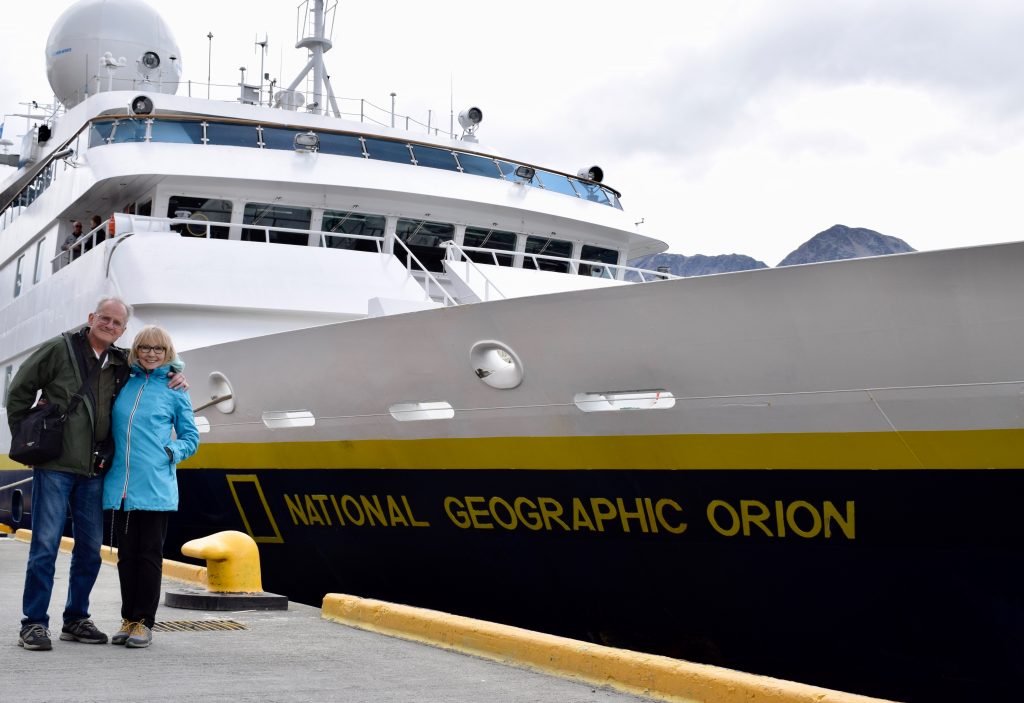
We’re about to board! Orion was specially designed with a steel hull to cut through Antarctic ice.
The food was out of this world (How they provisioned this boat for nine days is a feat of magic). For about 100 adventurers, the ship’s chef and staff provided three meals a day for the vegan, vegetarian, or meat lover, served by a cheerful, attentive crew. Lovely snacks and beverages could be enjoyed at any time.
I’ll give little background, but mostly I want to share photos of Antarctica, as they show what we found so special about this ice-y continent.
Where in the world are we?
Below is a map of Antarctica. It’s shaped like a stingray (so we’re told!). The Antarctic peninsula, the “tail” of the sting ray in the upper left, is where we visited. There was no set itinerary. The captain and expedition leaders made decisions based on the presence of ice, other boats, and weather. We made “detours” to view pods of whales, seals resting on ice floes, or spectacular icebergs, one fourteen miles long! (keep scrolling).
Most of Antarctica, except a small northern part of the tail, where we visited the South Shetland Islands (you can see them off to the northwest on the tail) where we saw lots of gentoo and chin strap penguins) is south of the Antarctic Circle ( you can see it on the map).
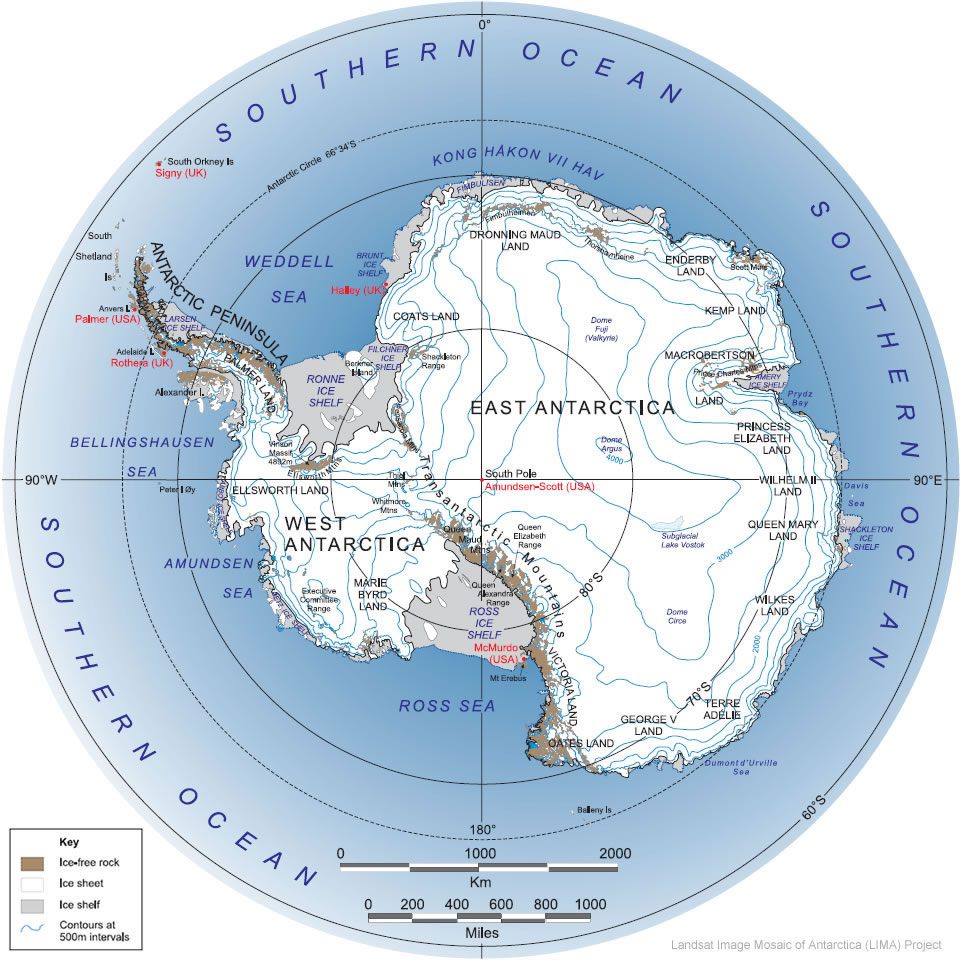
Antarctic Circle
That’s defined as where the sun is above the horizon for 24 continuous hours at least once per year (and therefore visible at midnight). It’s about 66.5º South. I say about because the location will change with the rotation of the earth. We all raised a glass of champagne as we crossed this major geographical boundary line.
Photos tell it best
Mostly I want to share photos because they speak best to the magical Antarctic environment:
- the icebergs and ice floes that reflect blue because the ice absorbs most of the visible spectrum, except for blue (some look as if they are injured with huge cracks that seem to bleed blue).
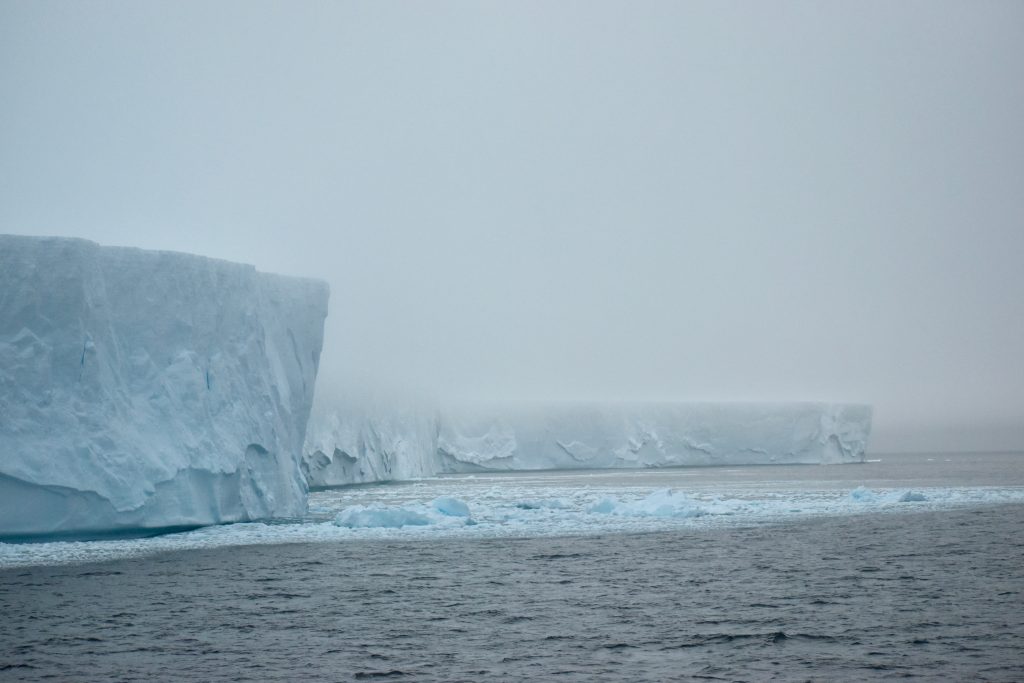
This Iceberg is FOURTEEN miles long – we’re seeing a portion of it here.
- the animals and their behavior we relished, from the soar of seabirds (see one below), to the spout and breach of humpback whales, the squeal and waddle of penguins, to the awkward struggles of seals moving outside of water.
- Factoid: The largest land animal in Antarctica is the wingless midge, Belgica antarctica, a type of fly. It’s a little under 1/2″ long. All the other animals, including seals and penguins, are considered marine animals, because they spend most of their time in the sea, hunting for food.

I think this is a snow petrel, but bird experts are welcome to chime in.
-
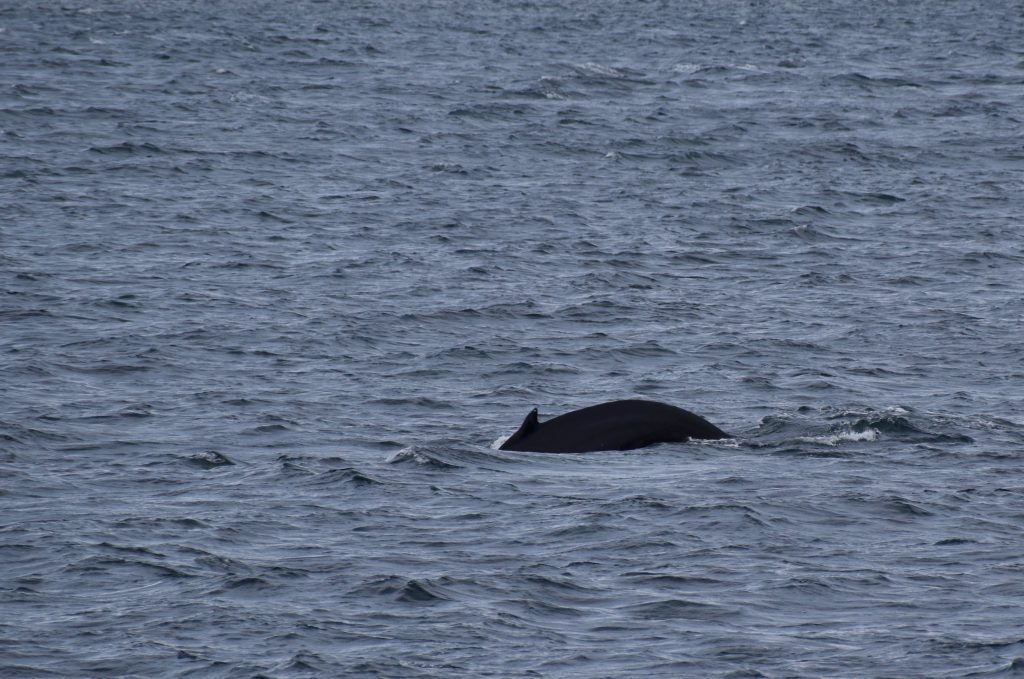
Humpback whale diving back…
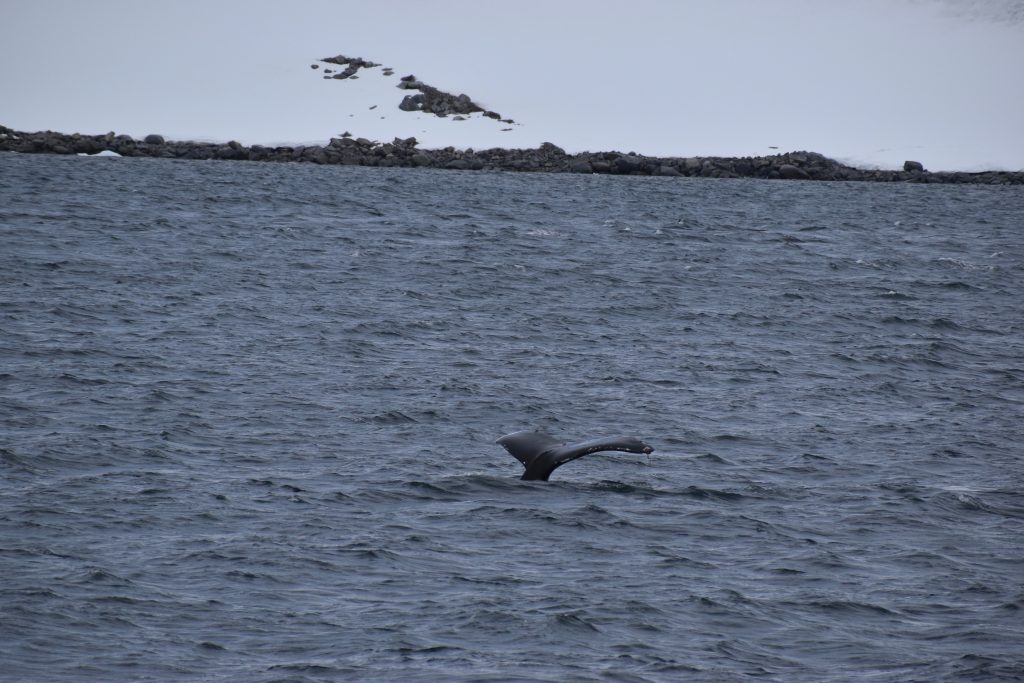
…until only the tail is left to submerge.
-

Weddell seals hanging out on an ice floe. They’re a favorite prey of killer whales.
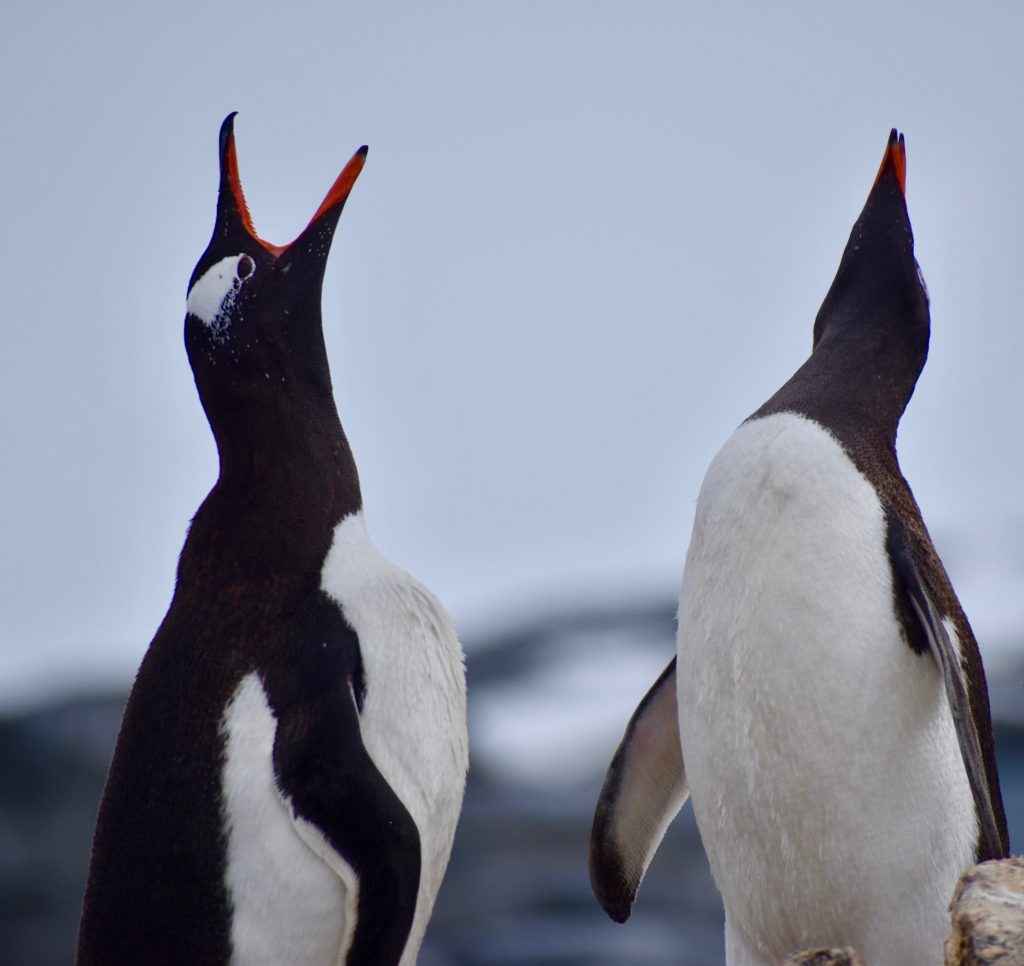
Two gentoo penguins (their orange beaks identify them) screeching – not clear even to naturalists why! Remember Far Side caption? “I gotta be me…!”
- Keep reading to see lots more animal photos.
- Antarctica was at the height of summer (equivalent to our July) when we visited, but it’s cold compared to our summers here in Chicagoland.
Why I wanted to go:
Antarctica has been on my travel list for years. My brother had been there about fifteen years ago, and I was smitten with his photos of the rich animal life that swims in these frigid waters, flies above them, and goes to land to have babies.
Travel:
It’s a loooong way to Antarctica from Chicago (about 42º north latitude). We flew to first to Santiago, Chile, all told, about 12 hours, not counting the three-hour stopover in Dallas. Then we flew Santiago to Ushuaia another 3 1/2 hours, the farthest most southern city in the world, which took another three and a half hours. That’s where we boarded the Orion.
Weather
It was between 30-40º F during the daytime, but that was still was about 85º warmer than it was in Chicago as the Polar Vortex blew through while we were gone, causing 50º below zero wind chills! We claimed to our folks back home that we go to Antarctica in winter for a warm weather get-way.

Keeping warm in Antarctica at Lemaire Channel
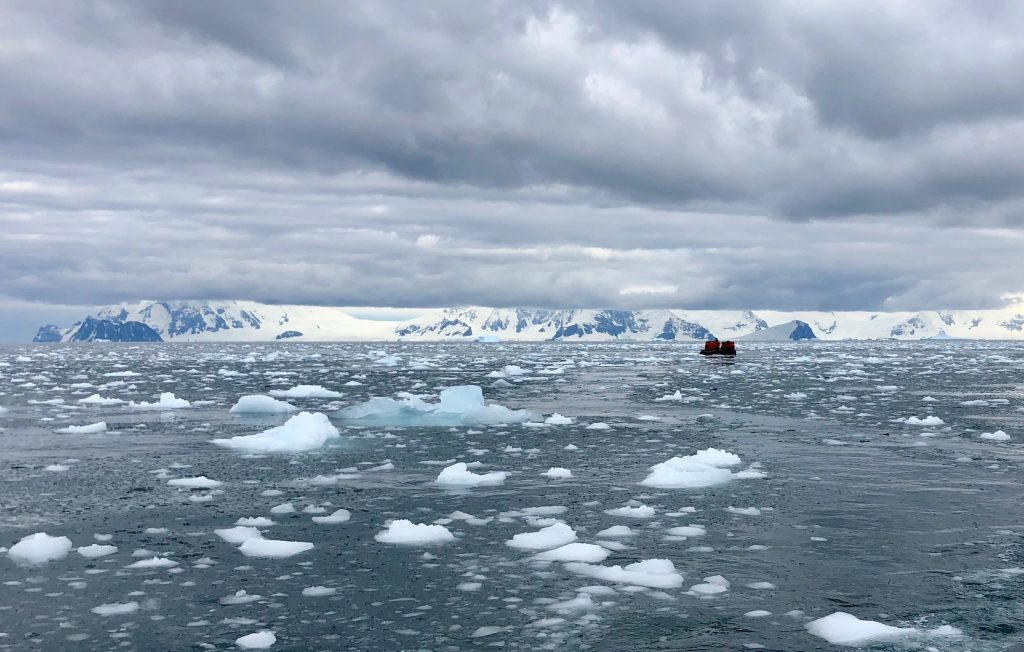
A zodiac in the distance takes travelers between “land” and the Orion.
Animals, ice, and seascape:
I want to focus now on photos of animals and photos that give you a perspective of the ice and seascape.
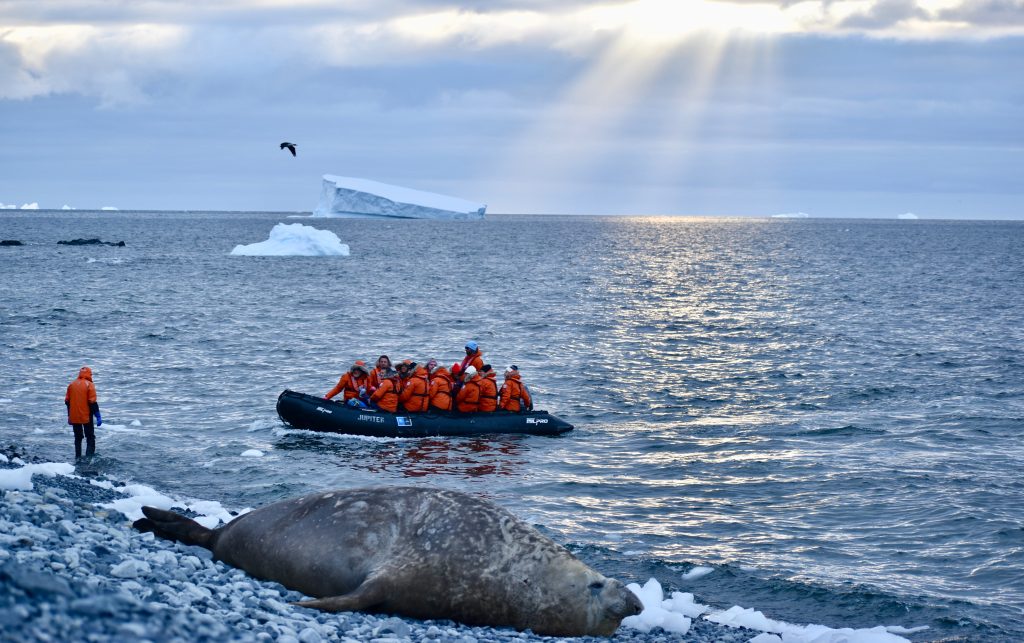
Zodiac departing for ship, with Elephant seal in foreground

Elephant Seal
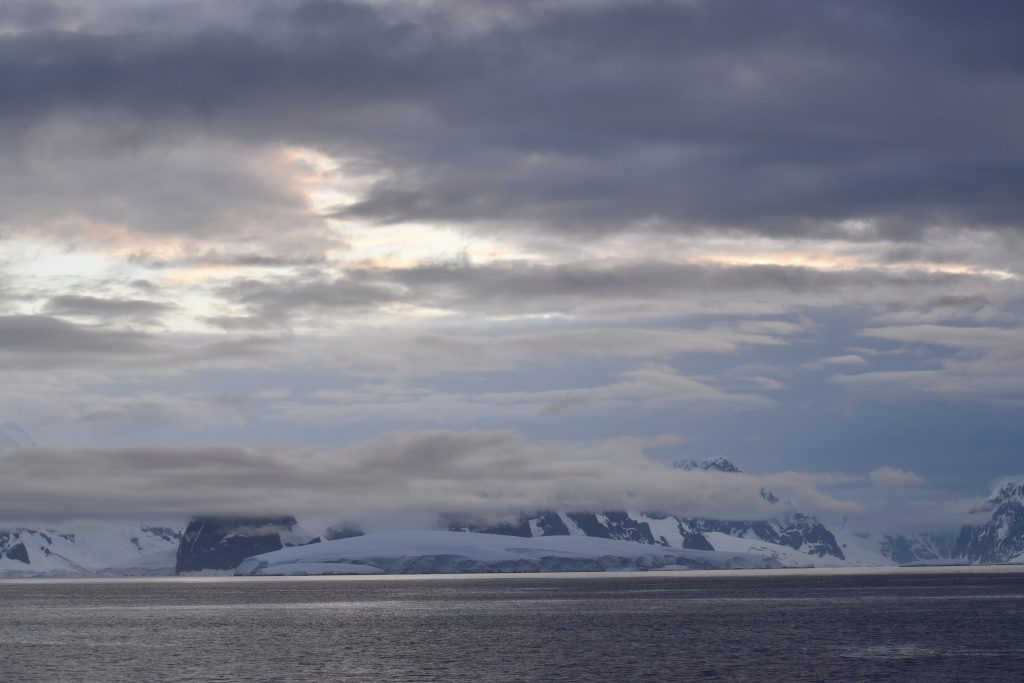
One of my favorite photos for capturing the other-worldly atmosphere
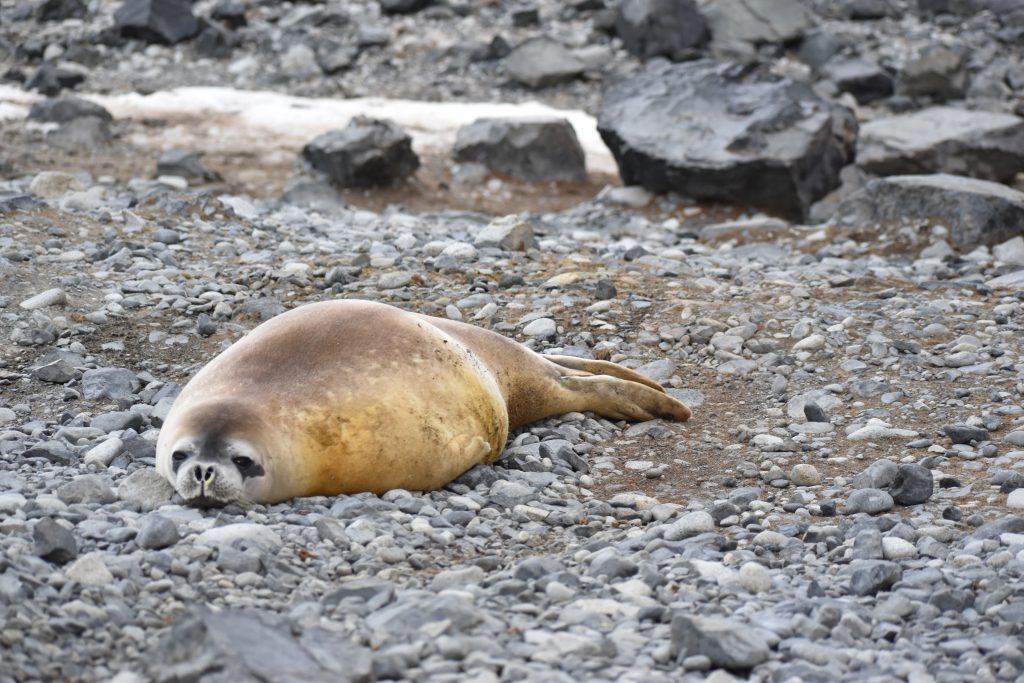
Weddell Seal, with its sweet, cat-like face
Penguins on parade:
Gentoo penguin babies and parent. “Hey, Ma (or Pa), I’m hungry. Open up.”
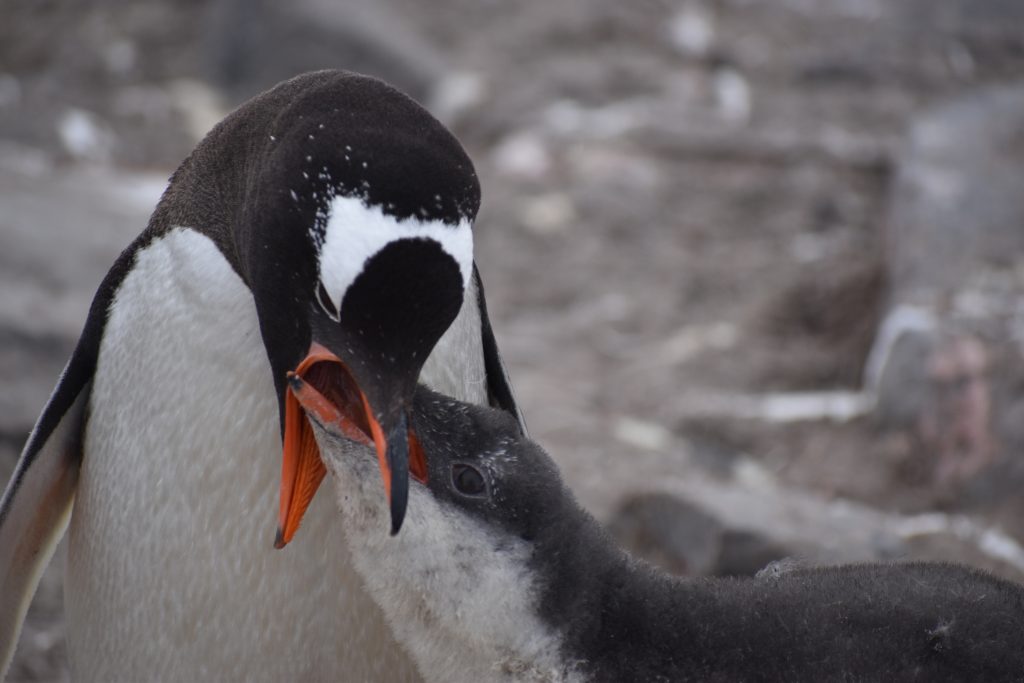
Baby pecks parent’s beak to get food.
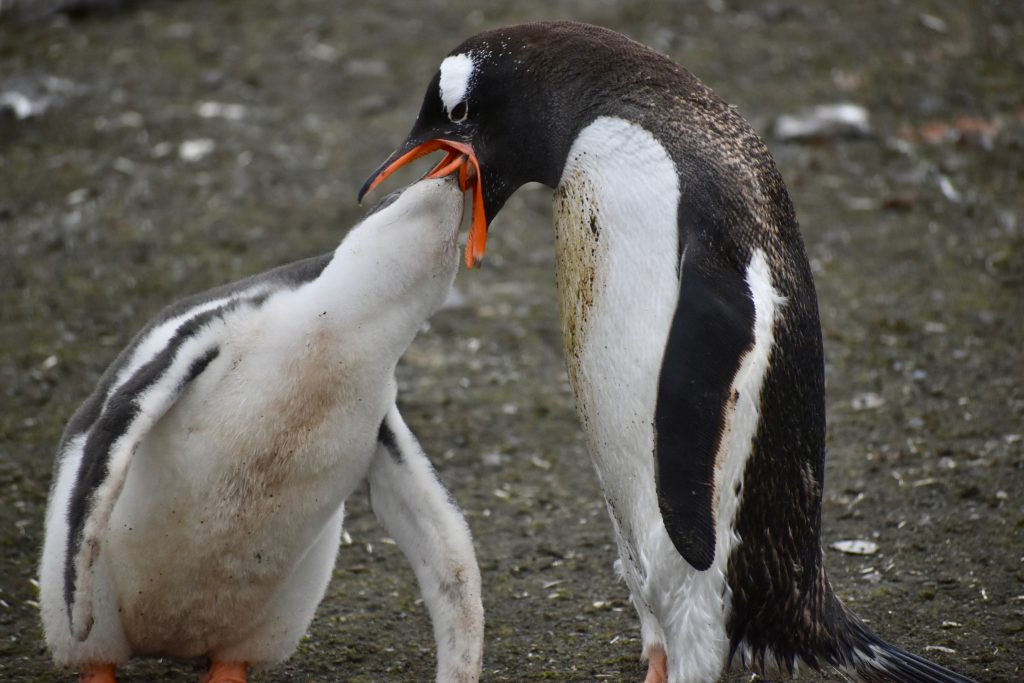
Poor parent had to regurgitate food to feed the baby. Yowie!
Adelie Penguins:
I think they’re adorable and almost human-like in some expressions:

Adelie penguins at waters edge. Will they go in or won’t they? 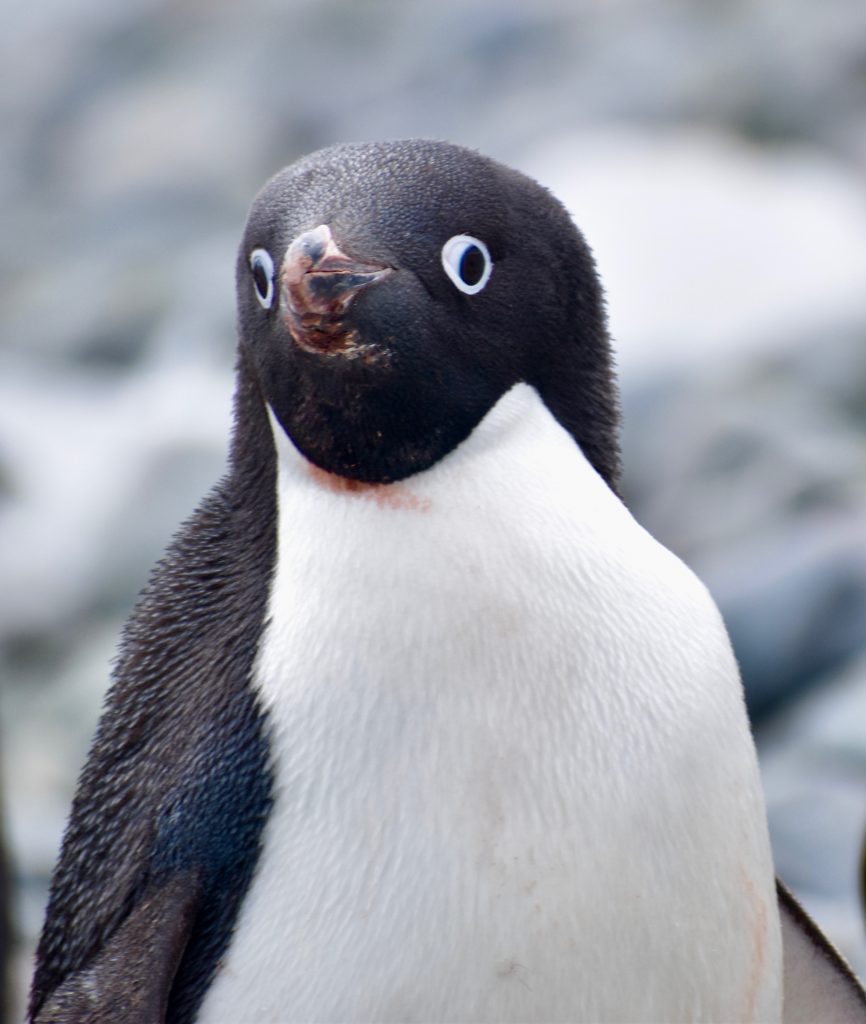
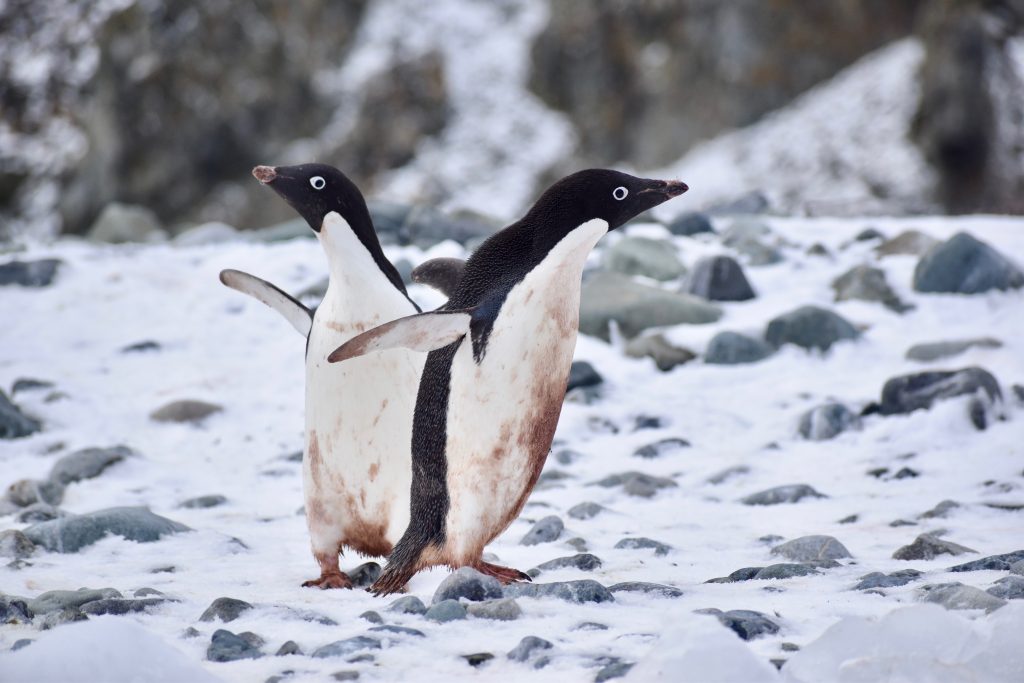
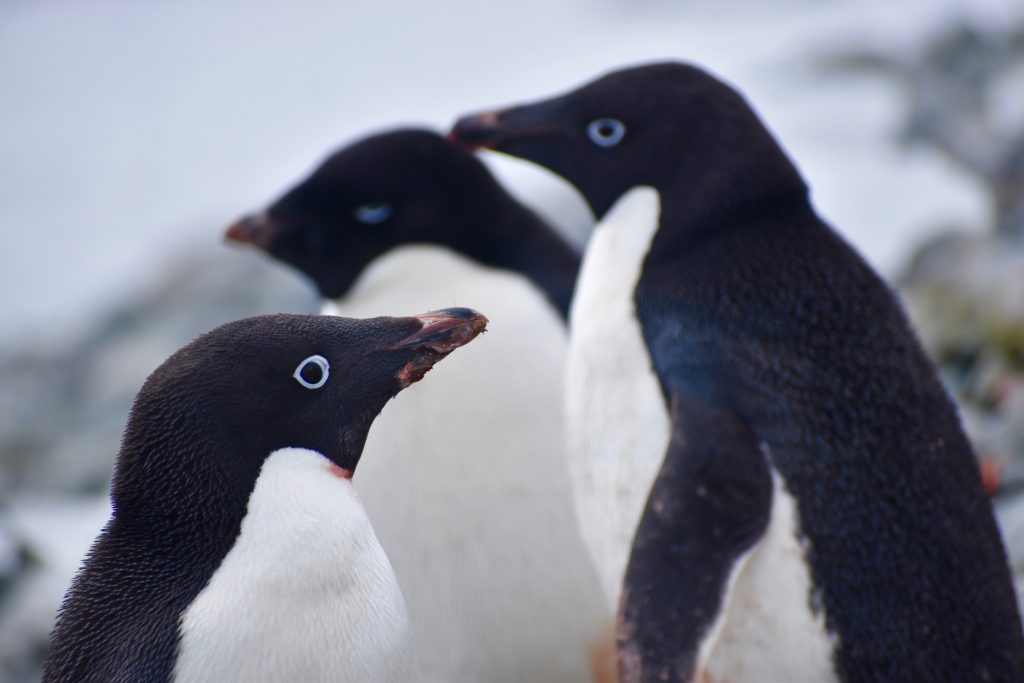
And now for the craziest animal of all in Antarctic:
The seasonal visiting homo sapiens.
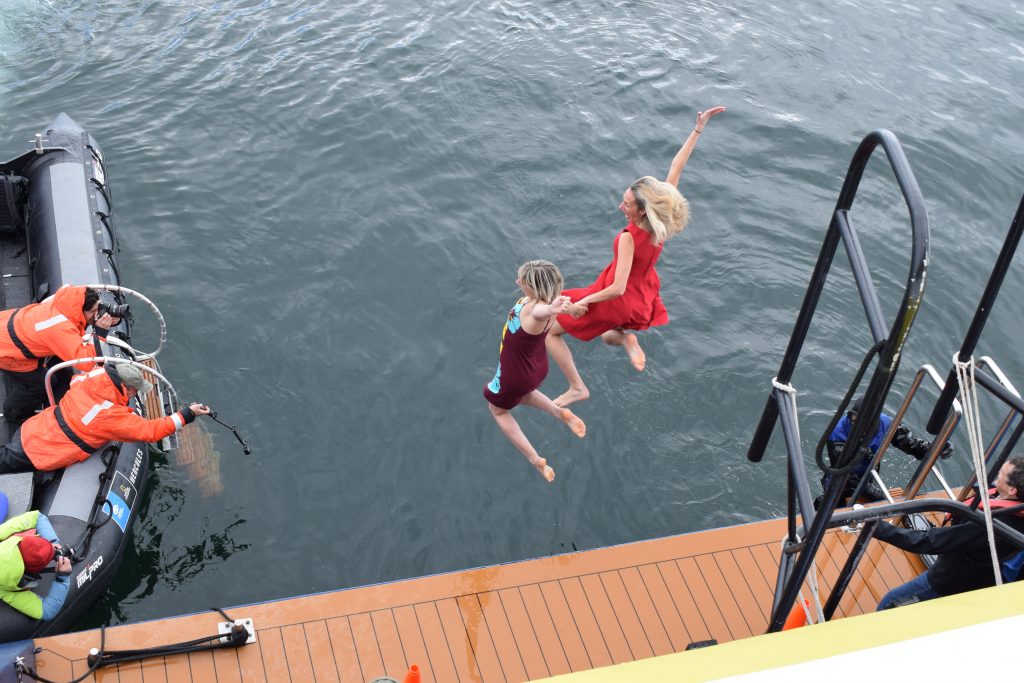
Those who wished to, could take a polar plunge into the 30 degree water. More than 30 did so (Bill and I declined as sane). These two lovely ladies, in their cocktail dresses, are two of the staff: left the registrar with a beautiful singing voice; right a marine biologist and assistant expedition leader. Staff and Nat Geo photographers recorded from sea level.
Thank you for reading. Comments welcome.
All photographs are copyrighted and may be used only with my permission. Appropriate credit must always be given along with a link back to this website. Thank you.
Redlined tells a first-hand story about a West Side Chicago family’s personal struggles and dreams intersecting with the racial upheavals of the 1960s.
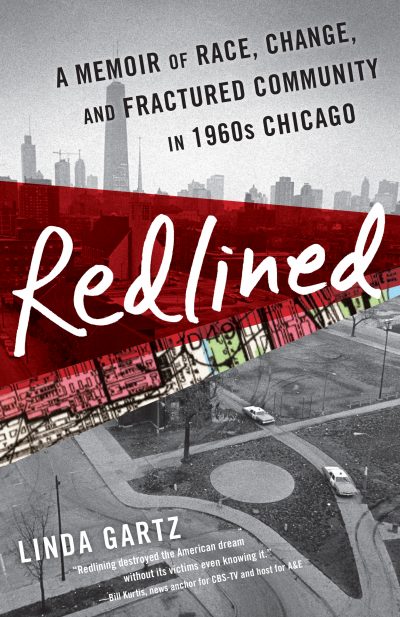

Quite a story and very nice photos and captions. Thanks.
Thanks for reading and commenting, Dave. So much more to say. I may address some other issue in upcoming posts or my newsletter.
Linda,
What wonderful photos from a once in a lifetime trip. Loved seeing the different varieties of penguins.
Hi Carla,
It was really a treat to see all these animals up close. We kept a respectful 15 feet away, but if a penguin came up to us, that was ok. Much more than I could possibly write about, so I stuck with photos.
Wow looks amazing…Wonder if much was discussed about climate change in Antarctica.
Thanks for sharing Linda and welcome back!
Yes- climate change was an important topic, and actually, I had meant to write more about that in this post. The site was giving me trouble and it got so late, I didn’t include that very important topic. Sea ice is melting. There’s a hole in the Antarctic. Plastic is HUGE problem. I may address some of this in a future post. Fishing is endangering seabirds – but fishermen are starting to realize it’s in their best interest to save the seabirds (get caught on hooks and drown, but grab a fish in the process) – thereby also saving their… Read more »
This looked like a wonderful trip, thank you for sharing all the great pictures
So glad you liked them, Gerry! It was pretty exciting to learn so much and see all the cool animals. See you soon!
Thanks for sharing your adventure, Linda.Loved your pix.